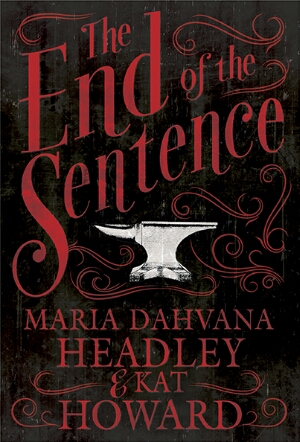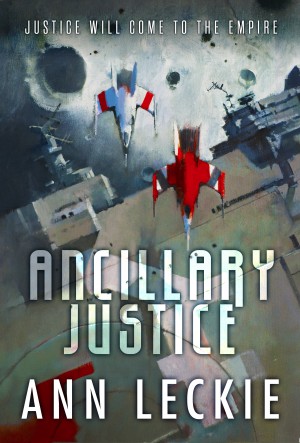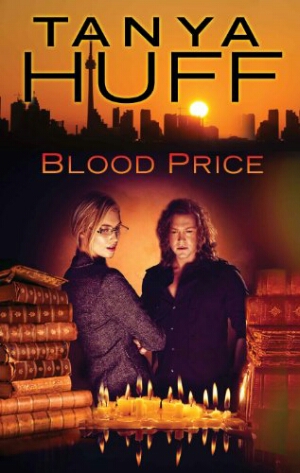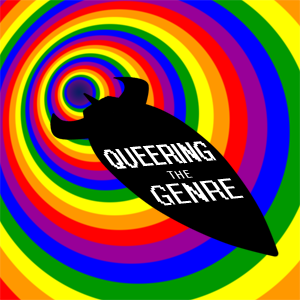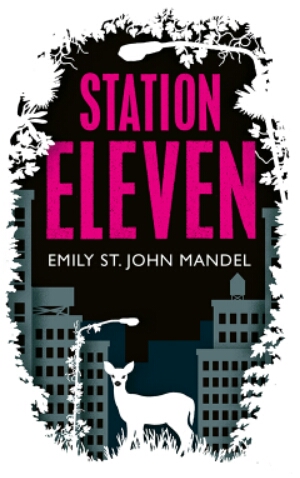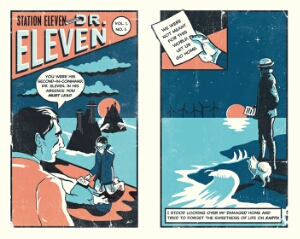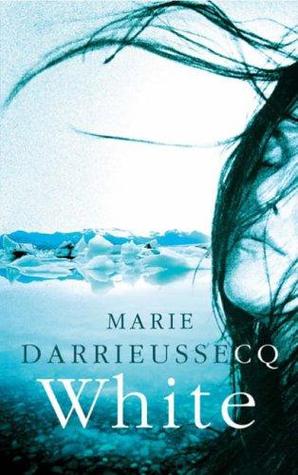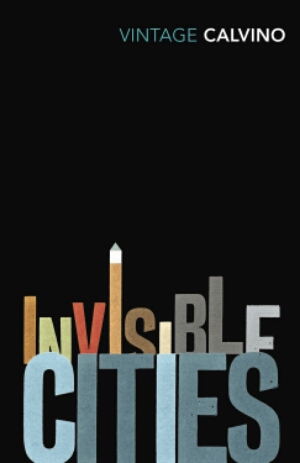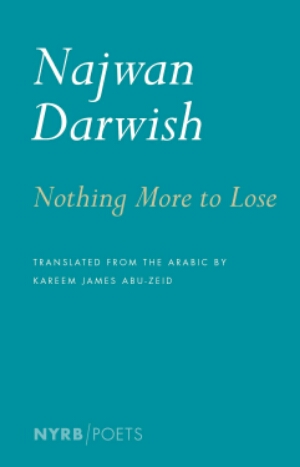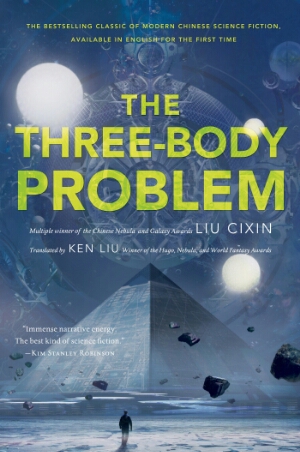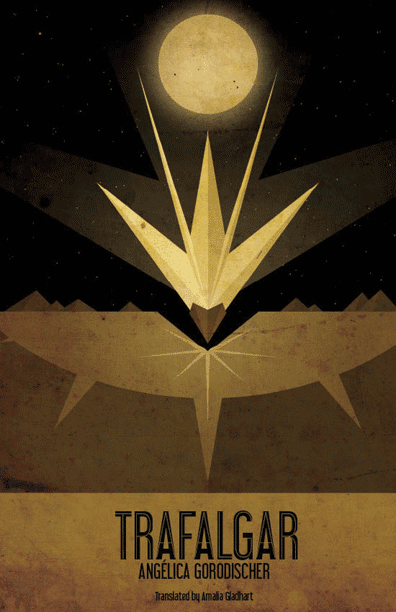The End of the Sentence by Maria Dahvana Headley & Kat Howard
It begins with a letter from a prisoner…
As he attempts to rebuild his life in rural Oregon after a tragic accident, Malcolm Mays finds himself corresponding with Dusha Chuchonnyhoof, a mysterious entity who claims to be the owner of Malcolm’s house, jailed unjustly for 117 years. The prisoner demands that Malcolm perform a gory, bewildering task for him. As the clock ticks toward Dusha’s release, Malcolm must attempt to find out whether he’s assisting a murderer or an innocent. The End of the Sentence combines Kalapuya, Welsh, Scottish and Norse mythology, with a dark imagined history of the hidden corners of the American West.
Maria Dahvana Headley and Kat Howard have forged a fairytale of ghosts and guilt, literary horror blended with the visuals of Jean Cocteau, failed executions, shapeshifting goblins, and magical blacksmithery. In Chuchonnyhoof, they’ve created a new kind of Beast, longing, centuries later, for Beauty.
~~~~~
The End of the Sentence is one of those quirky little works, perfect for Halloween; two writers working together to create a novella that employs the strengths of each of them to their best potential. But all collaborations are risky… the question is, do Headley and Howard make it pay off?
Not to spoil the end of the sentence before we start talking about The End of the Sentence, but the answer is a big fat yes when it comes to writing style. Howard and Headley manage to do what few collaborative partnerships achieve, in melding their styles seamlessly, to the point where there doesn’t in fact seem to be a primary writer in any section, or shifts between differen sections; the style is readable, consistent, and a perfect match to the story, somewhere between the creeping fear and monstrosity of horror and the unreality and cloudiness of fairytale. The different voices of the main text versus the letters that form a significant part of The End of the Sentence is amazing; all have the same kind of feel but all also have radically different feels and characters underlying them beautifully.
Those characters in The End of the Sentence are another strength. Each character is not only interestingly human, they’re also uniquely so; they have their personal tragedies and histories, their dark motives and lighter, loving sides. The End of the Sentence is as much about the personal, mundane – that is non-supernatural – tragedies of daily life as it is the horror and supernatural tragedy that hangs over the story; Howard and Headley manage to make a sort of tragedy and a kind of horror come together, and achieve the full ideal of tragedy: catharsis. It’s a beautifully elegant plot, shifting and changing its focus as it is read, never letting the reader feel comfortable with their feet on the ground or their understanding of events; repeatedly, Headley and Howard shift characters and character interactions around, changing the story and its nature, changing its effects on us as readers. It all adds up powerfully and effectively, combining the various facets of the fairytale, the horror and the tragedy together, beautifully emotionally well done.
For a very short piece, for a simple novella, The End of the Sentence packs a huge punch of pathos and catharsis; and the way Headley and Howard subvert our expectations repeatedly is truly exceptional. An amazing, wonderful book.
Horrorstör by Grady Hendrix
Something strange is happening at the Orsk furniture superstore in Columbus, Ohio. Every morning, employees arrive to find broken Kjerring wardrobes, shattered Brooka glassware, and vandalized Liripip sofa beds—clearly, someone or something is up to no good. To unravel the mystery, five young employees volunteer for a long dusk-till-dawn shift—and they encounter horrors that defy imagination. Along the way, author Grady Hendrix infuses sly social commentary on the nature of work in the new twenty-first century economy.
A traditional haunted house story in a contemporary setting (and full of current fears), Horrorstör comes conveniently packaged in the form of a retail catalog, complete with illustrations of ready-to-assemble furniture and other, more sinister accessories. We promise you’ve never seen anything quite like it!
~~~~~
Horrorstör is a horror novel for the twenty-first century; no old, haunted houses here, rather, the haunted modernity. The big-box, personalityless flat-pack furniture shop gets a personality… and it’s that of a haunted house.
The first half or so of Hendry’s novel manages to balance the creeping horror of the unknown, the things caught out of the corner of the eye, the labyrinthine unreality of Ikea, the depersonalisation of the consumer experience, with the humour innate to the idea of Ikea as horror setting – the cookie-cutter corporate slogans deployed against the encroaching darkness, the use of morale-building as defence against evil. Horrorstör manages to carry that off really well as we build in horror, seeing the strangeness of a big-box furniture retailer at night through the eyes of its employees; the inherent spookiness and weirdness of being in a place full of unused furniture and false houses.
The problem with Horrorstör is that the second half is trying to be SAW. While the repurposing of flatpack furniture for torture is brilliantly done, attempting to bring in the idea of fitting the torture to the imagined transgressions, and the rather Serious House-esque madness of the warden takes away an awful lot of the force built up in the first half of the novel. This is especially true in the way it takes the horror away from the strangeness of a big-box retailer and into the realm of something else, an external force supernaturally making the Orsk creepy, rather than the inherent creepiness. It seems to spend an awful lot of time building up this innate strangeness only to then abandon it at the last hurdle, almost as if Hendrix suddenly decides he is not in fact confident of his premise and needs to bolster it with something that feels rather bolted on.
The characters of Horrorstör might have something to do with that. Hendrix appears to have done what Whedon, in Cabin in the Woods, did; take the archetypical horror characters, and then subvert things. The problem is, Hendrix forgets that vital last ingredient; so we end up with the stubborn, rebellious woman who learns her lesson about responsibility and others from her experience, the officious person who learns how to relate, the sex-mad alternative-culture girl who is soft-hearted and induces half the trouble, and the sceptic along for the sex and the money. None of these characters, including our viewpoint character Amy, stand out at all, and that means that much of the horror just feels flat, because we can’t bring ourselves to care what happens to these characters, unfortunately.
The final area worthy of comment is the actual physical volume of Horrorstör. This is one of those books where, unless the ebook is designed completely differently, it will lose an awful lot. Quirk’s production of Horrorstör emulates in a number of key ways an Ikea catalogue; each chapter starts with a general description as Ikea uses for each of its product ranges, the physical dimensions, paper and layout are reminiscent of a catalogue, and the front and back endpapers are store maps and advertisements of exactly the kind Idea use. The impact of this is brilliant, and adds a certain something to the consumption of Horrorstör, confusing the story, the artefact-in-the-world, and the story-in-the-world together, giving it somehow an extra layer by which it draws in the readers.
Hendrix’s novel uses a very intriguing premise, and the first half really builds a creepy suspense, but ultimately even the amazing production Quirk have put into Horrorstör can’t lift it above just another disappointing SAW-alike…
If You Liked… Then Try…: Ancillary Justice
Ann Leckie’s Ancillary Justice swept the science fiction awards this year, winning the Arthur C. Clarke, BSFA, Hugo and Nebula Awards among others, an unprecedented feat. It’s also one of my favourite novels, and one I like to share with people as much as possible, for its scope and scale, its approach to gender, its fast-paced writing, and, well, general wonderfulness. But it’s not an isolated example; here are some books you might like if you enjoyed Ancillary Justice:
 Tanya Huff’s Valour series of military science fiction have many elements in common with Ancillary Justice, not least the fast-paced writing and the sheer joy in science fiction taken. It goes deeper than that, though; both deal with, on some level, the traumas and crimes of war, the difficult decisions, and the idea of comradeship. Huff doesn’t deal with gender to the same extent as Leckie, certainly not with a full on attack on the standard gender paradigm, but gender stereotypes are out of the window. Furthermore, not only has the Voice of God declared all characters bisexual unless stated otherwise, but they actually are bisexual – that is, we see all sorts of configurations of various sexualities, as well as open relationships, polyamory and more, in a fantastic way. My review of the first book, Valour’s Choice.
Tanya Huff’s Valour series of military science fiction have many elements in common with Ancillary Justice, not least the fast-paced writing and the sheer joy in science fiction taken. It goes deeper than that, though; both deal with, on some level, the traumas and crimes of war, the difficult decisions, and the idea of comradeship. Huff doesn’t deal with gender to the same extent as Leckie, certainly not with a full on attack on the standard gender paradigm, but gender stereotypes are out of the window. Furthermore, not only has the Voice of God declared all characters bisexual unless stated otherwise, but they actually are bisexual – that is, we see all sorts of configurations of various sexualities, as well as open relationships, polyamory and more, in a fantastic way. My review of the first book, Valour’s Choice.
 Jacqueline Koyanagi’s Ascension is possibly the most diverse novel I have ever read. Koyanagi’s cast includes chronically ill, trans, non-neurotypical, variously sexually queer characters, many of whom are people of colour and a large proportion of whom are not male (female, genderqueer, etc). This isn’t a matter of comment for Ascension, although some of the more unexpected representations – Otherkin, for instance – are, while normalised, still questioned by the protatonist. Koyanagi’s debut isn’t without its problems, including some very rocky prose and poor plotting, but that’s not to say it’s not worth your time despite this.
Jacqueline Koyanagi’s Ascension is possibly the most diverse novel I have ever read. Koyanagi’s cast includes chronically ill, trans, non-neurotypical, variously sexually queer characters, many of whom are people of colour and a large proportion of whom are not male (female, genderqueer, etc). This isn’t a matter of comment for Ascension, although some of the more unexpected representations – Otherkin, for instance – are, while normalised, still questioned by the protatonist. Koyanagi’s debut isn’t without its problems, including some very rocky prose and poor plotting, but that’s not to say it’s not worth your time despite this.
 Melissa Scott’s Shadow Man is one of the most famous works of science fiction to have really questioned the gender binary, and one of the earliest to do it well. The clash of cultures between a five-gendered and a binary-gendered society still has problems related to essentialist assumptions, even while challenging binarist thinking, but it at least opens the discussion up in an interesting way, similar to the questioning of our understanding of gender the Raadch of Ancillary Justice provokes. Like Ancillary Justice and, more so, Ancillary Sword, Scott’s Shadow Man also tackles issues of colonialism and the relationship between dominant and nondominant cultures, and ethical relations between them, in a brilliantly done and never overstated way. My review of Shadow Man.
Melissa Scott’s Shadow Man is one of the most famous works of science fiction to have really questioned the gender binary, and one of the earliest to do it well. The clash of cultures between a five-gendered and a binary-gendered society still has problems related to essentialist assumptions, even while challenging binarist thinking, but it at least opens the discussion up in an interesting way, similar to the questioning of our understanding of gender the Raadch of Ancillary Justice provokes. Like Ancillary Justice and, more so, Ancillary Sword, Scott’s Shadow Man also tackles issues of colonialism and the relationship between dominant and nondominant cultures, and ethical relations between them, in a brilliantly done and never overstated way. My review of Shadow Man.
 It’s impossible to talk about Ancillary Justice without also talking about Iain M. Banks and the Culture, despite the lack of direct influence from one on the other. That’s in large part because the Culture and the Raadch have a number of features in common, including the prominence of AIs – treated very similarly by the writers, but very differently in their worlds – and the non-binarist approach to gender. It’s also something deeper, though; both the Culture novels and the Raadch address issues of cultural colonialism and the homogenisation of culture by a dominant force, albeit using different kinds of force. They’re also both extremely good writers, Banks famously so; and the combination of fast, fun romp with very serious issues and a certain degree of tragedy that both achieve is very notable.
It’s impossible to talk about Ancillary Justice without also talking about Iain M. Banks and the Culture, despite the lack of direct influence from one on the other. That’s in large part because the Culture and the Raadch have a number of features in common, including the prominence of AIs – treated very similarly by the writers, but very differently in their worlds – and the non-binarist approach to gender. It’s also something deeper, though; both the Culture novels and the Raadch address issues of cultural colonialism and the homogenisation of culture by a dominant force, albeit using different kinds of force. They’re also both extremely good writers, Banks famously so; and the combination of fast, fun romp with very serious issues and a certain degree of tragedy that both achieve is very notable.
So, those are the four big recommendations I’d make to fans of Ann Leckie and Ancillary Justice… but now it’s time to throw open the comments to the floor! Why am I wrong? What have I missed? What would, or wouldn’t, you recommend?
Blood Price by Tanya Huff
When Blood Price was published in 1991, it signaled the start of what would eventually become one of the most popular genres in the field – modern urban fantasy. Blood Price introduces readers to Vicki Nelson – a private investigator who was previously a homicide detective; Henry Fitzroy – the illegitimate son of Henry VIII, who become a vampire during his father’s reign, and has been earning a comfortable living as a writer of bodice rippers; and Mike Celluci – a Toronto homicide detective who was Vicki’s partner on the squad. Together the three of them will face everything the supernatural can throw at them, while at the same time they navigate the dangers of their ever-changing interpersonal relationships.
Vicki Nelson witnessed the first attack by the forces of dark magic that would soon wreak its reign of terror on Toronto. As death followed unspeakable death, Vicki became enmeshed in an investigation that would see her renew her stormy relationship with her former police partner Mike, even as she teamed up with Henry Fitzroy in a desperate attempt to track the source of the attacks. For Henry had knowledge of realms beyond the mortal acquired over the centuries he’d spent mastering his own insatiable need – the life-from-death cravings of a vampire…
~~~~~
If Blood Price is what urban fantasy looked like before urban fantasy was urban fantasy, urban fantasy has always looked like urban fantasy. Just queerer.
Blood Price, nearly two and a half decades after its first publication, isn’t going to blow the minds of any of its readers with its characters, really. Vicki Nelson, the tough private investigator and ex-cop who was a hotshot until she quit the force due to degenerative loss of her sight, is the standard wise-cracking sex-driven genius that (female-protagonist) urban fantasy focuses on; not herself supernatural, across the course of the book she seems rapidly able to accept it and integrate it into her worldview. Huff similarly made the mold into which all subsequent vampires have fallen when she created Henry Fitzroy, albeit with some differences (like bisexuality); brooding, romantic, somewhat guilty about his vampirism, a loner, out of time… that he writes appalling bodice rippers is some consolation, a sort of self-aware critique of some of the heavier and worse romance tropes around Vicki and Henry, mind you. The core cast also has the grizzled cop with a heart of gold in Mike Celluci, whose relationship with Vicki as both partner and ‘partner’ has all kinds of interesting emotional handups.
Finally, the villain of the piece, Norman Birdwell, is one of those characters it would be so easy to get wrong but who Huff gets very right. Blood Price balances various elements of his character against each other; he’s a geek bullied by jocks, but whose toxic personality does actually earn the bullying, and we see other geeks (playing a role-playing game, at that!) who seem far more socially integrated than Norman. Indeed, if Blood Price had been written in 2010 not 1990, Huff could have been accused of ripped Norman straight from the toxic cesspits of the PUA boards of reddit; his misogyny and sense of entitlement fit right into the PUA/MRA community, and Huff’s obvious disdain for him is wonderful.
The plot is really just something to hang that disdain, and the complex relationships of Mike, Henry and Vicki on; Blood Price doesn’t really show much interest in the idea of investigation, rather going through the motions but allowing characters to jump to correct conclusions very readily to advance the plot. Partly, of course, that is because Huff is working in a supernatural framework where the normal investigative process – as is noted explicitly a number of times – would break down; but partly it’s because it isn’t really what the book is interested in, being rather more focused on its characters. The developing relationship between Henry and continuing one with Mike are both excellently portrayed and Huff’s sensitivity to the idea of polyamory is heartening; and the bit-part of Tony, the homeless addict, is a wonderful brief flash into the gay community and the fears of HIV that were so prevalent at the time.
Blood Price isn’t perfect; in the two decades since its publication, urban fantasy has developed an awful lot, in ways that eclipse the mold-breaking approach Huff was taking with the novel. The plot is flimsier than might be acceptable now and reliant rather more on both an implicit Christian framework than is seen as acceptable by modern writers, and the role of coincidence and deus ex machina to resolve the plot is very heavy handedand argues a little more attention needed to be paid to it.
In the end though, if you go into Blood Price interested in its characters, you will be more than satisfied; just don’t expect Huff, in this instance, to be bringing her A-game to the plot…
Station Eleven by Emily St John Mandel
DAY ONE
The Georgia Flu explodes over the surface of the earth like a neutron bomb. News reports put the mortality rate at over 99%.
WEEK TWO
Civilization has crumbled.
YEAR TWENTY
A band of actors and musicians called the Travelling Symphony move through their territories performing concerts and Shakespeare to the settlements that have grown up there. Twenty years after the pandemic, life feels relatively safe. But now a new danger looms, and he threatens the hopeful world every survivor has tried to rebuild.
STATION ELEVEN
Moving backwards and forwards in time, from the glittering years just before the collapse to the strange and altered world that exists twenty years after, Station Eleven charts the unexpected twists of fate that connect six people: famous actor Arthur Leander; Jeevan — warned about the flu just in time; Arthur’s first wife Miranda; Arthur’s oldest friend Clark; Kirsten, a young actress with the Travelling Symphony; and the mysterious and self-proclaimed ‘prophet’. Thrilling, unique and deeply moving, this is a beautiful novel that asks questions about art and fame and about the relationships that sustain us through anything — even the end of the world.
~~~~~
Station Eleven is a postapocalyptic novel in the manner of The Road, and indeed shares some of the same features as that novel, such as travelling through the postapocalyptic world… but Mandel’s creation is actually completely at odds with McCarthy’s.
I wouldn’t say Station Eleven is hopeful; no book with a postapocalyptic prophet who kills his way to control of towns, kidnaps preteen/early-teenage girls to make them his and his cultists’ wives, and controls places by fear can really be described as hopeful, nor really can one which starts out by killing most of the population with a flu pandemic. At the same time, a novel that suggests not only will humanity survive, but that culture will survive, in the form of the Travelling Symphony – a 16th century style band of players, travelling a small part of what used to be America playing Classical music and performing Shakespeare – is inherently hopeful; it presents a picture of humanity as not only wanting but actually needing a certain level of culture to survive, a picture that is rather attractive.
The present tense narrative is also strangely hopeful; Mandel tells the story of an actor from a small town who hits it big, and Station Eleven watches as marriages form and break apart, as fame’s vagaries leave their mark as the media harass and then forget him, and the effects on those around a celebrity. Indeed, this strand of Station Eleven is a fascinating, beautiful attack on the damage celebrity culture does to those we think of as inviting it; celebrities themselves, and those in their close orbits. We learn about two of the three wives of our actor, Arthur; about his close friend Clark; and about Arthur himself, all damaged in some way by Arthur’s fame.
Of course, neither of Mandel’s narratives would be at all compelling if Station Eleven wasn’t. The two timelines are interleaved brilliantly, moving around among characters in “past” and “present” – that is, the pre-and-para-apocalypse and the post-apocalypse – who are linked through Arthur’s final performance of King Lear; that simple, minor link serves as a brilliant way to tie the various individuals, otherwise very disparate, together, especially as while some coincidental postapocalyptic meetings happen, Mandel doesn’t push it and bring everyone together. That lack of contrived collision is a real strength of Station Eleven, avoiding a forced, false reunion; it gives the book a much more natural, honest and real feeling that might otherwise have been lost.
The characters of Station Eleven are beautifully human; each is an individual with very individual interests, from Arthur’s inability to deal with his fame and lack of real human connection caused by his fame – the tragic trajectory of Arthur’s life is a really interesting demonstration that it doesn’t take an apocalypse for people to die unhappy. By contrast, Clark’s trajectory demonstrates that an apocalypse isn’t necessarily a tragic event; its immediate impact is inevitably traumatic, especially in parting him from his boyfriend, but the way he develops is an interesting study of a character responding to disaster.
Station Eleven, though, is dominated and defined by female characters; Kirsten and Miranda are really the core of Mandel’s novel, with their distinctly different models of female life, possibility, and development. Mandel doesn’t go down the well-trodden routes of a woman destroyed by her divorce – nor one who is completely motivated by it; rather, Miranda is a brilliant character in her own life, who interacts with but is far from defined by the men around her. It’s a great portrayal of an older woman, as well, as we see her grow, mature, and develop wonderfully. Kirsten, on the other hand, is a young woman, a child at the time of the apocalypse, who grows up in a strange limbo state, one that Mandel paints beautifully – that of half-remembering the abundant pre-apocalypse, but unsure how much is actual memory and how much is constructed. Station Eleven handles it really deftly, intelligently and well, and Kirsten is a really fascinating character as a result.
Station Eleven isn’t perfect – it could do with a little more exploration of how a stable society actually develops. Worse, Mandel skims an awful lot over the pain and horror that is implied in the immediate aftermath of the apocalypse – especially concern surrounding loved ones; indeed, Mandel really takes away the pain of those who lose loved ones, and it seems very strange to have that emotion lost given the emotional truth of so much of the rest of the novel.
Overall, though, Station Eleven is a great example of post-apocalyptic literature with heart; Mandel takes a theoretically crushing narrative and injects it with hope, without taking away (although, granted, blunting) the horror of apocalypse. Very well done.
White by Marie Darrieussecq (trans Ian Monk
It is 2015, and the first permanent European base in Antarctica is taking shape. Edmée, the only woman on the station, works to secure radio communication with the outside world. She’s all too aware that she’s the focus of constant scrutiny – and it’s not just from the mend at the base.
A beautifully atmospheric novel of ghosts and love and memory at the end of the world, White is an outstanding achievement from an extraordinary writer.
~~~~~
White is a fascinating novel about survival in a hostile, sterile environment, about closed communities, about alien landscapes… situating these all on Earth.
This makes Darrieussecq an unusual writer in an SF context; White takes place simultaneously to an attempt to establish a permanent Mars base, has conract with NASA employees engaged in that effort… and yet is barely interested in it, except as an occasional comparitor for the utterly hostile environment of the book. White is interested in the idea of a terrestrial landscape as hostile to life as that of Mars: the far, frozen South. Antarctica is, of course, famously sterile and lifeless, with conditions inimical even to extremophiles and as unchanging as the face of Mars; so the two missions running in parallel make for an interesting comparison, as Darrieussecq draws out.
The plot is relatively simple; really, it’s a love story, of Edmée, the radio technician, and Peter, the heating engineer; White has its core in these two characters, in their pasts leading them to the White Project, in their connections as disconnected souls whose links to their cultures and countries are superficial and shallow (Edmée as an immigrant, Peter as a refugee), in their attraction. This could work horrendously in some hands, and Darrieussecq is hardly entirely successful in portraying the refugee experience; but at the same time, the grounding of their physical isolation in Antarctica in an emotional isolation beforehand is carried off really well. That the rest of the cast are barely characters hardly matters; they’re as much backdrop against which the romance can play out as Antarctica itself is.
There is, however, one other character we must mention, and that is the narrator. White is a very odd book in this regard; the narrator is, or the narrators are, the collective spirits of explorers, travellers and others who have been pioneers pushing the boundaries of human knowledge. Hence Scott and Amundsen and their teams are here, as ghostly presences, not only in the narrative as figures of Antarctic discovery and tragedy, but also as spirits who take an active role in the narrative; that is, the ghostly narrators at times are Scott, are Amundsen, are their companions or their animals, or are explorers from completely different parts of the world.
This narratorial voice has a huge impact on White, inevitably; and a somewhat strange one. It means we move in and out of the specifics of the characters to a more general discussion of the Antarctic; we’re both connected to and yet also dispassionate about the events of the novel, drive them and simply observe them. It gets especially interesting at times when characters are in highly emotional states, as this seems to be when the dissociation is greatest, with strange, evocative, semi-abstract descriptions which talk around, rather than directly about, the emotional states of the principal actors. This also gives White one of the strangest sex scenes you are ever likely to read…
White is one of those strange, beautiful little books that are amazing blends of the literary and the genre; perhaps Darrieussecq at times disappears too far into some of her conceits, but they’re conceits that deserve a little disappearance!
Invisible Cities by Italo Calvino (trans William Weaver)
In Invisible Cities, Marco Polo conjures up cities of magical times for his host, the Chinese ruler Kublai Khan, but it gradually becomes clear that he is actually describing one city: Venice. As Gore Vidal wrote: “Of all tasks, describing the contents of the book is the most difficult and in the case of a marvellous invention like Invisible Cities, perfectly irrelevant.”
~~~~~
Invisible Cities is one of those weird books that are impossible to categorise. Possibly Calvino’s best-known work, the framing device bears little relation to the content of the majority of the book, and even to itself at times… so how to review it?
Invisible Cities is a short story stuck together with a book, to make something that if looked at from the right angle makes a novel, but is otherwise a bizarre and wonderful literary experiment. The framing device, of Kublai Khan and Marco Polo talking, jumps around, moves backwards and forwards, takes on different aspects and styles, and really is just a vehicle for broad philosophical and narratological discussion; we move through prose style to straightforward dialogue to drama-style layout, and these sections interact in various ways, some continuing directly from the previous interlude, others jumping on in completely different ways.
But these aren’t the core of Calvino’s book. That core is the invention of the cities themselves, the cities of Invisible Cities. Each of these is a page or two long, a description of an aspect of a city that captures the spirit of that city; each is weird and wonderful, utterly fantastical, and indeed rather bizarre in many cases. A number of them feel familiar to fantasy readers, arguably because they’ve influenced the genre directly; Calvino’s book is one of those that is upheld, consistently, as a classic translated genre fiction piece. It engages interestingly with the idea of urbanity, of what makes a city, and of what makes a fiction; the relationships between these cities is at most abstract, although they’re also categorised, and each section between the different interludes works fascinatingly as a collection.
Invisible Cities is, fundamentally, impossible to review; but at the same time, it is more than worth talking about, both in terms of what Calvino is trying to do, and how he is trying to do it. A really interesting experience.
Nothing More to Lose by Najwan Darwish (trans Kareem James Abu-Zeid)
Nothing More To Lose is the first collection of poems by Palestinian poet Najwan Darwish to appear in English. Hailed across the Arab world and beyond, Darwish’s poetry walks the razor’s edge between despair and resistance, between dark humour and harsh political realities. With incisive imagery and passionate lyricism, Darwish confronts themes of equality and justice while offering a radical, more inclusive, rewriting of what it means to be both Arab and Palestinian living in Jerusalem, his birthplace.
~~~~~
Between Amal El-Mohtar and Liz Bourke, I suppose it was inevitable I was going to read Darwish’s collection. So, I did…
Nothing More To Lose is simultaneously nothing to do with speculative fiction, and also completely dystopian. But then, the world Darwish is writing about is dystopian; and that is brought across tremendously, painfully well by his poetry. It’s not soft-edged, it’s not polite, it’s blunt and brutal, it calls out Zionists, it names genocide as genocide, it rages against injustice and discrimination. This isn’t a collection for people looking for a polite Palestinian talking about idyllic themes; it’s a collection for those wanting to look at the rage, the disenfranchisement, the horror that is the Palestinian condition in the modern world.
Something that really stands out is the historical engagement and literacy of Darwish’s poems. In an early poem in Nothing More To Lose, ‘Identity Card’ (p8-9), Darwish references Byzantium, the Armenian genocide (a recurring topic), the Kurds, the Algerians, the expulsion of the Jews from Andalucia – and explicitly states a connection and an empathy with all of them. That sense of global parallels, of connections across different communities and cultures, of a shared humanity across persecuted people, really gives depth and something unique to Darwish’s poetry, and that it is on display in so much of Nothing More To Lose is really fascinating.
This isn’t a simple collection though; Darwish has all kinds of different poems in here, all undoubtedly influenced by the dystopic situation of Palestinians, but focusing on different aspects of that. Nothing More To Lose has elegies, laments, love poetry, a certain amount of humour (albeit largely dark), anger, despair, and a certain sort of peace at times; it’s a dense, varied, fluid collection of poetry in that regard, and a really beautiful slim volume that encapsulates so much of the human condition – but specifically the Palestinian condition.
Darwish has really given us poetry that reveals one person’s experience of the Palestinian condition; Nothing More To Lose is a beautiful, painful collection that should be given to everyone who wants to talk about the Middle East before they say another word.
The Three-Body Problem by Liu Cixin (trans Ken Liu)
Three-Body Problem is the first chance for English-speaking readers to experience this multiple award winning phenomenon from China’s most beloved science fiction author, Liu Cixin.
Set against the backdrop of China’s Cultural Revolution, a secret military project sends signals into space to establish contact with aliens. An alien civilization on the brink of destruction captures the signal and plans to invade Earth. Meanwhile, on Earth, different camps start forming, planning to either welcome the superior beings and help them take over a world seen as corrupt, or to fight against the invasion. The result is a science fiction masterpiece of enormous scope and vision.
~~~~~
Liu Cixin is a phenomenon in China, but somehow, hasn’t reached the Anglosphere in translation… until now. The Three-Body Problem is Tor’s attempt to change this, with the aid of the award-winning short story writer Ken Liu in the role of translator. When a multiawardwinning author’s work is transmitted through the efforts of another, what kind of novel results?
Well, the first thing to comment on, perhaps, is the translation. Inevitably, The Three-Body Problem loses a little in translation, as all works taken from their original language do; but in this case it feels almost intentional, in a very interesting way – like Ken Liu is leaving Liu Cixin’s work as much as it was in Chinese as possible, rather than replacing idioms with English ones, reworking puns to work in English, or changing cultural references. Indeed, Ken Liu provides 42 footnotes across the course of the novel to explain translation choices and cultural references rather than simplifying or eliding them, which really keeps clear that this is a translation, rather than the smoothness of some works which attempt to wholly convert their original text into English, culturally and idiomatically.
Liu Cixin’s novel is a fascinating one, culturally, though. While being centred on Chinese culture, Chinese characters, and Chinese history, there is also a very Western sensibility to it in one particular respect; The Three-Body Problem feels like something incredibly steeped in the science fiction of the so-called Golden Age. In terms of style, of characters, of plot, Golden Age SF sensibilities pervade the novel; indeed, one of the protagonists,Ye Wenjie, feels like Asimov’s Susan Calvin in her emotionless disconnection from the human race and her base rationality. Liu Cixin also shares the problem-centric narrative of an Asimovian story; Three-Body Problem is focused very heavily on the solution to a mathematical problem and on the proper response to extraterrestrial communication.
This should make the book feel dated but somehow, through more interesting characterisation than Asimov especially ever managed, Liu Cixin keeps Three-Body Problem feeling like modern-day Golden Age SF; Wang Miao especially is a rounded character, driven by the rational problem and the desire for a solution to it but also with human feelings – panic, amusement, fear, shock, and so on. He grounds the novel in a way Ye Wenjie never could; that is, he grounds the novel with a character with whom the reader can easily empathise, rather one who seems almost totally closed off from human connection. It’s an interesting contrast to see, especially as Liu Cixin then subverts that at the close of the novel by revealing another side of Ye Wenjie, a more sentimental side, that The Three-Body Problem has largely concealed. That isn’t to say charicature doesn’t enter into The Three-Body Problem; the rogue, disrespectful police officer appears to be a cultural universal, given the character of Da Shi, who would fit right in with the protagonists of Dirty Harry, Luther and Life On Mars.
As far as plot goes, this is perhaps the strongest and also the weakest area of The Three-Body Problem. In some ways, Wang Miao’s simultaneous investigation of the Frontiers of Science, implicated in a series of suicides by scientists, and his playing of the game Three Body, are rather obviously linked and formulaic, with elements of surprise managing to shift things up but being comparatively minor, and things that seem to be intended to be reveals or twists failing to surprise. The nonlinearity of the plot fails to actually keep surprises back, although it does avoid giving too much away, but still, it seems a rather straightforward novel. On the other hand, Liu Cixin’s playing with narrative, with chronology, with stories within stories and the importance of stories all make the plot more interesting, and his approach to linking the different subplots and elements in The Three-Body Problem works really very well.
The Three-Body Problem, then, feels like a combination of the best bits of the Golden Age combined with modern sensibilities; it’s a tremendous work on the part of Liu Cixin, and an amazing achievement of Ken Liu’s translation to have captured so well the *feel* of the novel (or at least, to have seemed to have done so!)
DoI: Review based on an ARC requested from the publisher, Tor Books. The Three-Body Problem is released in North America on November 11th.
Trafalgar by Angelica Gorodischer (trans Amalia Gladheart)
When you run into Trafalgar Medrano at the Burgundy or the Jockey Club and he tells you about his latest intergalactic sales trip, don’t try to rush. Trafalgar likes to stretch things out over six or seven coffees. No one knows whether he actually travels to the stars, but he’s the best storyteller around, so why not sit back, let Marcos bring you something refreshing and enjoy the story?
~~~~~
Gorodischer’s set of linked stories is one of the best known translated works of science fiction from Latin America; although Trafalgar may not even be speculative fiction…
Trafalgar, as the blurb says, is a series of anecdotes recounted by Trafalgar Medrano; but for the most part, they’re not transmitted to the reader directly by him – the exception, ‘The Gonzalez Family’s Fight For A Better World’, has asides to his imagined audience, largely about coffee. These anecdotes are retold, along with the framing narrative of our first-person narrator bumping into Trafalgar, in a stylish, amusing style; hence we can go from Trafalgar talking, in long first-person paragraphs, to the mundanity of Marcos delivering coffee to the table, or Trafalgar asking his interlocutor for a refill. It’s an interesting narrative approach, especially given the outrageousness of his stories; with the exception of ‘Trafalgar and Josefina’, told by an aunt to our narrator, the truth and accuracy of Trafalgar’s recountings are essentially unquestioned. Hence, after much of the book has passed, we’re suddenly strongly introduced to the possibility that the irrepressible raconteur is an unreliable narrator of his own adventures. Gorodischer shines an interesting light backwards onto the preceding stories, to interesting authorial effect.
The anecdotes themselves are extraordinary and absurd, absolutely the stories of a raconteur; they have a sort of swashbuckling sense to them, with Trafalgar playing the role of explorer, saviour of damsels in distress, political activist and never without resources. Trafalgar, across its ten stories, covers all sorts of different topics and areas, such as complex caste systems containing within them the seeds of their own destruction, temporally unmoored societies, orgasm machines and societies held back by their own dead… Each is complete in itself, although some link up with each other; and this adds a certain element of uncertainty, as the few cross-references between stories implies veracity (or well constructed lies), while the general lack of such implies the opposite. Gorodischer, again, holds and manipulates this balance excellently and beautifully to avoid stating absolutely the reliability of Trafalgar.
The characters are a more mixed bag. While Trafalgar himself, and our interlocutor, are both very well fleshed out, interesting and rounded characters with their own foibles and flaws, all too many of the characters in Trafalgar’s narratives blur together; Trafalgar, because it doesn’t dwell on its secondary characters, really just tells us about the eponymous Trafalgar, a sort of character study of the man through whose life flit various shades, passing across and affecting him but themselves not rounded or whole enough to be truly effected by him. It’s actually a strength of the work that this is the case, as the way the stories are told becomes itself part of the story; Trafalgar’s interest is in himself and his activities, and impressing his audience, primarily.
This, then, is a fascinating and wonderful collection whose self-fictionality is an open question; Gorodischer has written both a wonderful series of anecdotes and an interesting puzzle in Trafalgar.

